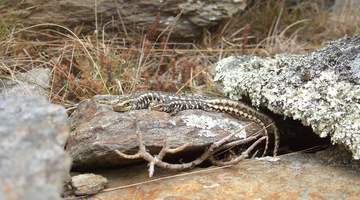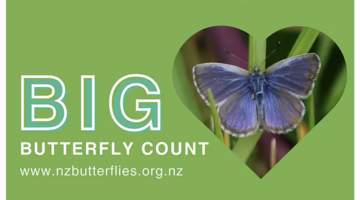

New Zealand’s native species evolved in isolation from other regions for millions of years after the last land bridge to Gondwana was lost. Birds and insects dominated our ecosystems, and the ...
READ MORE

Skinks and geckos are the only 2 native families of lizard found in Aotearoa New Zealand (note that tuatara are not lizards). They are vertebrates and belong to the class Reptilia. All our native ...
READ MORE

New Zealand’s endemic tuatara is a very unusual animal. They are the only living representative of a group of reptiles known as Rhynchocephalia (sometimes known in the past as Sphenodontia) that ...
READ MORE

Aotearoa New Zealand is rich in animal life – from tiny pepeketua and giant wētāpunga to ngā manu a Tānemahuta and ngā ika a Tangaroa. Some of these animals are unique to particular locations ...
READ MORE

In this activity, students consider some of the ethical issues involved with keeping earthworms (and other animals) captive in a classroom setting. By the end of this activity, students should be ...
READ MORE

Insects are one of the largest and most diverse groups of creatures on Earth. There are more than a million known species, yet they all share common physical characteristics. In this activity ...
READ MORE

iNaturalist logs hundreds of thousands of photos of flora, fauna and fungi. There are even sound recordings too. Each is described and geo located. iNaturalist is used by citizens and scientists ...
READ MORE

Marine Metre Squared is a New Zealand citizen science project that supports communities to monitor their local seashore. The project has been designed to provide meaningful, valid environmental ...
READ MORE

This New Zealand-based citizen science project collects data about butterflies in our gardens, schools, parks and farms – any location in the country or on the outer islands. This annual event – ...
READ MORE

To most of us, one earthworm resembles another. Although earthworms do have common characteristics, species differ widely in their size, skin colour and in the roles they play in the soil ...
READ MORE

This unit plan is designed for students in years 1–5. When someone mentions the word ‘butterfly’, what image pops into your head? Chances are it’s the monarch or the white butterfly, as these are ...
READ MORE

In this online PD session recorded on 30 July 2015, primary school teacher Angela Schipper describes how she used the Butterflies resources from the Science Learning Hub in the classroom. In ...
READ MORE
Mainland sanctuaries, also known as mainland islands, are an important conservation strategy in New Zealand. In this video clip, Associate Professor Alison Cree, from the University of Otago ...
READ MORE
Associate Professor Alison Cree, from the University of Otago, talks about the difference between being cold blooded and warm blooded. She discusses why scientists prefer to use the terms ...
READ MORE
Fast skinks are assumed to be more able to escape from predators, find a mate and find food. In this video clip, Dr Kelly Hare, from the University of Otago, talks about measuring the sprint ...
READ MORE

Explore this interactive to learn more about New Zealand’s unique reptiles and amphibians. Move your mouse or finger over any of the labelled boxes and click to obtain more information. Select ...
READ MORE

This interactive groups animals through Māori frameworks based on whakapapa. Click on the labels for information about the animal groupings. Select here to view the full transcript and copyright ...
READ MORE

Learn more about introduced and native earthworms in Aotearoa New Zealand. Use the Slideshow menu for further options, including view full screen, and go here for the download option.
READ MORE